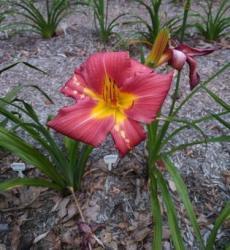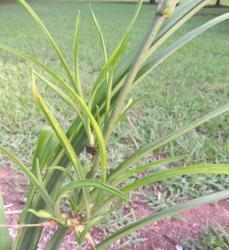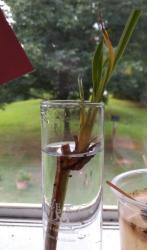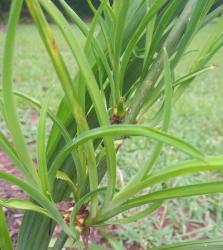Seedfork said:I have a ton of proliferations on NOID plants, I may play around with them and see if I can detect any difference in cutting the scape off above the proliferation. I would be surprised if the amount of green material above the scape actually provides much nutrition to the proliferation, not saying it does not provide some energy.
The catch is that each cultivar will be different. There will be differences in the thicknesses of the scape; in the height of the scape; in where the prolif forms; in when the prolif forms; in the number of buds on the scape and how long they continue to open; in how many of the flowers are pollinated (none should be allowed), etc. And then there are the differences in the environment (weather). The end result is a great deal of variability that will obscure any effect (as the effect will be a growth rate and all those factors may affect growth rates). That means "replication" that is, several prolifs on each cultivar under as similar conditions as much as possible.
There are several possible sources of nutrition for a proliferation:
1) the green leafy material of the proliferation
2) the green scape
3) leaves on the fan from which the scape rose
4) other fans in the clump
The interesting thing is that the green areas of the scape presumably produce more nutrient than they need and they send that nutrient somewhere. While buds, flowers, pods and seeds form those can all use extra nutrients. When they are no longer present (or are not allowed to form (ie pods/seeds) then where does the extra nutrient go if not to a prolif?
It would not be surprising if the prolif made the majority of the nutrients it requires. The situation in many sprouting plants is that for a short time while the sprout is small it requires nutrients from storage but it quickly becomes large enough to no longer need any stored nutrients and starts to send surplus nutrients to storage. I have never checked the research on this but to kill perennial weeds one is advised to remove all green material above ground before it becomes a week old. That supposedly depletes storage without allowing the sprout to replenish what it has used.






it had 2 pods that where roughly 4 weeks old on it so I put the scape in some water. I changed the water about twice a week for nearly 3 weeks and the pods ripened up for me. The pods never split open but turned brown and the seeds came out firm and still plump. The bottom of the scape was already looking a little slimy so I'm not sure how long this can be done for but in a 2.5 -3 week pinch it worked for me.